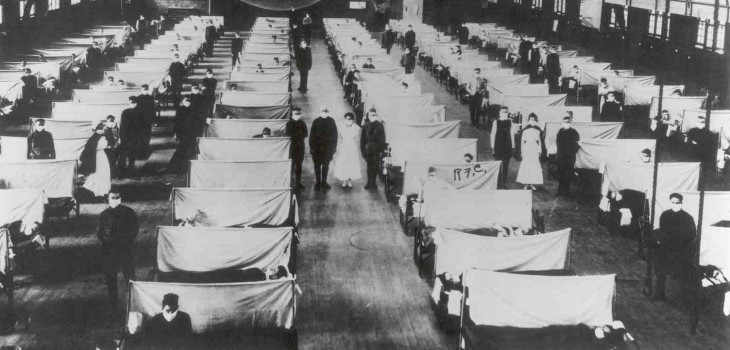By Prashant Yadav
The risk of a flu pandemic is amongst the top global risks today. Scientists and public health experts seem to agree that it is a question of ‘when’ and not ‘if’ it happens. It has been nearly 100 years since the Spanish flu pandemic in 1918, which is known to have killed between 50 and 100 million people. Prevention and preparedness for a flu pandemic are often not given their due importance because of the perception that spending scarce resources on a very low likelihood event that might occur at an uncertain time in the future is not the best allocation of resources. In a recently published article Drake et al. assess the impact of ‘time to pandemic’ uncertainty on cost effectiveness analysis of pandemic containment strategies.
While efforts are underway to harness new technologies to better predict when and where the next pandemic might strike, considerable uncertainty remains around the ‘when’ question for the flu pandemic.
Poor countries more affected
The preparedness for pandemic flu is particularly poor in low-income countries where resources are scarce and many other infectious diseases are competing for limited national budget resources. Malnutrition, population density and unsanitary living conditions associated with poverty lead to more widespread impact in poor countries. For example, during the 1918 Spanish flu pandemic the largest number of deaths was not in Spain, but in India. India experienced close to 18 million deaths, more than the deaths in all other countries combined. Drake’s paper considers antiviral stockpiling in Cambodia, which is a low-income country with many competing demands for resources in its health budget. Given the global public good nature of investments in pandemic preparedness, should there be a global financing architecture for pandemic preparedness?
Uncertainty dilutes the investment case
Stockpiling of antiviral medications is one intervention that can limit the spread of the pandemic and reduce suffering and death. However, as the shelf-life of antiviral medications is limited (3-5 years), the uncertainty factor on when the next pandemic will strike makes it particularly challenging to gather support for large investments in stockpiling. Stockpiling requires an upfront investment for a benefit that will occur at an unknown point of time in the future. While epidemiological data from previous outbreaks combined with additional studies on strain mutation has enabled better understanding of the transmission potential of a pandemic strain, the ability to predict when a pandemic would start still remains low. This uncertainty about ‘when’ significantly dilutes the investment case for stockpiling and other preparedness interventions. Uncertainty surrounding when and how much also impacts the manufacturers of antiviral medicines. Are there other ways to strengthen the investment case in pandemic preparedness?
Systematic examination of the uncertainty surrounding ‘when’
Parameter uncertainty is usually analyzed via deterministic sensitivity analysis. In univariate sensitivity analysis one parameter is varied to test the sensitivity of the model’s results to changes in this specific parameter. Multivariate sensitivity analysis looks at changes in sets of parameters. The authors of this paper vary all parameters simultaneously, with parameter values being sampled from predefined probability distributions. Other parameters such as hospitalization rate, case fatality rate, and intervention cost are not as important as the ‘time to pandemic’ in estimating the cost effectiveness of stockpiling. What can be done to improve prediction confidence intervals for ‘time to pandemic’?
Results robust to time-to-pandemic probability distribution
Most studies on pandemics use a Poisson distribution to model time to pandemic. Drake’s paper uses uniform, gamma, normal and Poisson and finds that allocations at a cost effectiveness willingness-to-pay threshold of US$ 900 per DALY averted do not change with different time-to-pandemic sampling distributions.
Discount rate paradox
Another factor which the analysis in this paper demonstrates is important to consider is the discount rate used in the cost effectiveness calculations. A higher discounting of future health losses/benefits will not lead to investments in preparedness. This raises multiple questions. For events with potentially catastrophic impact, such as pandemic flu, what is the right discount factor to consider? Our basic constructs of time value of money start to fall apart when we consider events that have the potential of wiping out over 5% of global GDP.
Prashant Yadav is Senior Research Fellow and Director of Health Care Research Initiative at the University of Michigan











